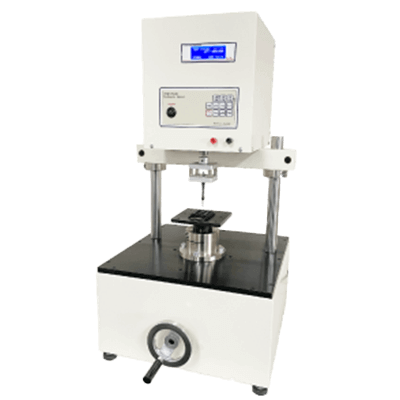What Is a Fatigue Testing Machine?

A fatigue testing machine is a device that evaluates the endurance of metal parts or products under repeated loading conditions.
For instance, a metal piece may not show any change when loaded once, but repeated loading can cause small cracks to appear. These cracks eventually lead to brittleness and destruction of the piece. This process of gradual weakening is known as fatigue, and the point at which fracture occurs is termed the fatigue limit.
Failure can occur when a product is repeatedly subjected to stress below its assumed allowable limit, making fatigue a critical factor in product design and testing.
Uses of Fatigue Testing Machines
Fatigue testing machines are used in the inspection and design stages of products that undergo vibration, rotation, and repeated loading, including their components and materials. When selecting a fatigue testing machine, it’s important to choose one capable of simulating the specific fatigue conditions expected in the product. Due to the high cost and large size of many fatigue testing machines, outsourcing the testing to third parties is also a viable option.
Principles of Fatigue Testing Machines
There are various types of fatigue testing machines, each designed to assess different aspects of fatigue. These include tensile, bending, impact, torsion, rotation, and electrical tests. Here, we will focus on the “tensile/compressive fatigue test”, “bending fatigue test”, and “torsional fatigue test”.
1. Tensile and Compressive Fatigue Tests
Tensile and compressive fatigue tests are conducted on metal materials, parts, and products. Tensile fatigue tests involve applying a continuous tensile force at fixed intervals, while compressive fatigue tests apply cyclic compressive forces from both sides. The duration of these tests is adjusted based on the magnitude and frequency of the applied forces.
2. Flexural Fatigue Tests
Flexural fatigue tests include the “plane bending fatigue test” and the “rotary bending fatigue test”. The plane bending test, suitable for both plastic and metal materials, involves repeatedly applying a bending force to a fixed point. This test applies to products like compressor vanes, which endure repetitive bending forces. The rotary bending test, on the other hand, involves rotating a cylindrical specimen while applying a bending load, commonly used for motor-driven automobile parts.
3. Torsional Fatigue Test
Torsional fatigue testing involves fixing two points and repeatedly twisting them to assess fatigue. This test is often used for engines, turbines, motors, or shafts that transmit rotational torque. Environmental factors like temperature can influence test results, hence tests are sometimes conducted in temperature-controlled or environmental chambers. Additionally, “thermal fatigue” tests assess fatigue under heat cycles of repeated heating and cooling.
Other Information on Fatigue Testing Machines
Power Source for Fatigue Testing Machines
Fatigue testing machines can be classified into three types based on their power source: Mechanical, Vibration Machine, and Hydraulic Types.
1. Mechanical Type
Mechanical-type machines use mechanisms to create reciprocating or rotating motions for continuous testing. They are adaptable for specific test applications and widely available in standard configurations. These machines can also be designed for rotary or combined linear-rotary motions, offering versatility in applications.
2. Vibration Machine Type
Vibration machine-type testers use electromagnetic coils or similar components to generate vibrations. While their amplitude is limited, they can operate at high frequencies, allowing for rapid completion of repetitive tests and shorter overall test durations.
3 . Hydraulic Type
Hydraulic-type machines are powered by hydraulic sources and cylinders, capable of applying high loads. Some models, known as hydraulic servos, can also apply high-frequency vibrations. This type is characterized by its ability to exert substantial force and is suitable for tests requiring significant load applications.